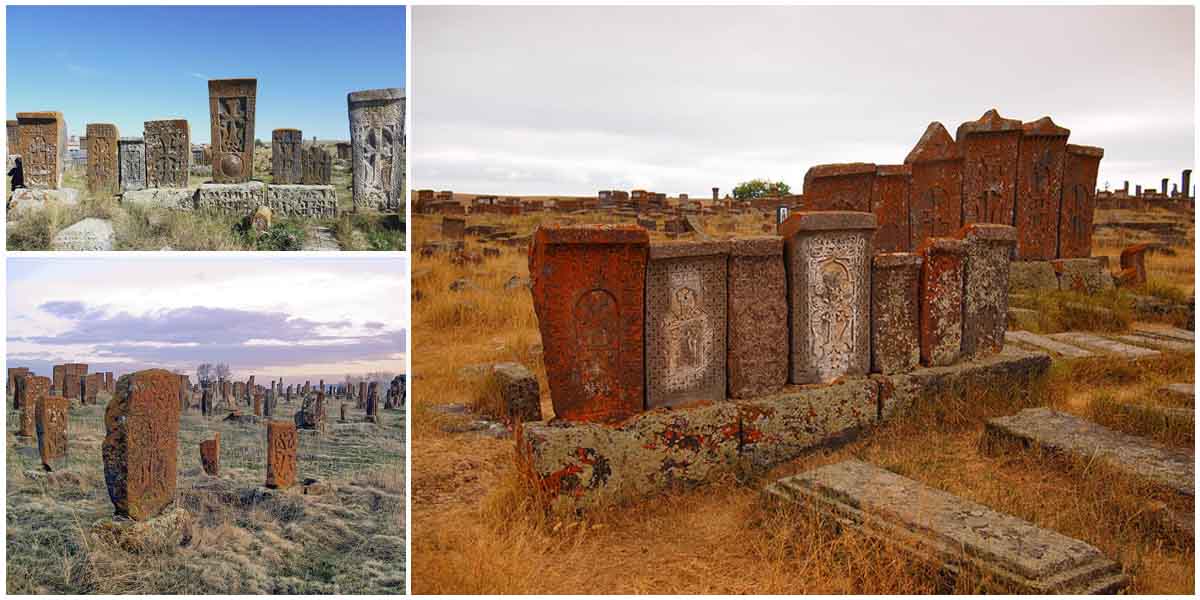The Noratus cemetery, one of the best known medieval graveyards in Armenia, has the largest collection of decorative stone crosses, known as khachkars, in the world. It is now the only surviving cemetery of its kind in the country, after the khachkars in Old Julfa, in Nakhichevan, were destroyed by the Azerbaijani government in a much-protested action.
The oldest of these stone crosses dates back to the 9th century. Medieval Christians believed that the stone crosses would protect their souls from misfortune.
A khachkar is a memorial stone that has a carved cross in the middle. These stones are decorated with motifs characteristic of medieval Christian Armenian art. Because of their symbolism and magnificent craftsmanship, in 2010 they were added to the UNESCO List of Intangible Cultural Heritage.
The previously largest collection of khachkars, in the cemetery in Old Julfa, held some 10,000 monuments. In 1998, UNESCO ordered that the ongoing destruction of those monuments cease. The international pressure did not save the khachkars. They were sledgehammered and the cemetery has reportedly been turned into a military shooting range by the Azerbaijani government.
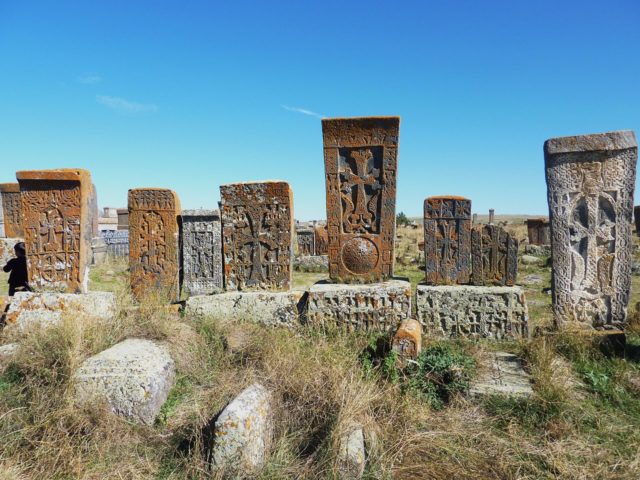
The design of the khachkars had historical as well as personal meaning. Most of the time, the cross in the middle of the stone is surrounded by a solar disc or a rosette and decorated with images of vines, grapes, and other plants. Many khachkars were erected to commemorate important events, such as the construction of a new church or a victory in battle, or as protection from evil and natural disasters.
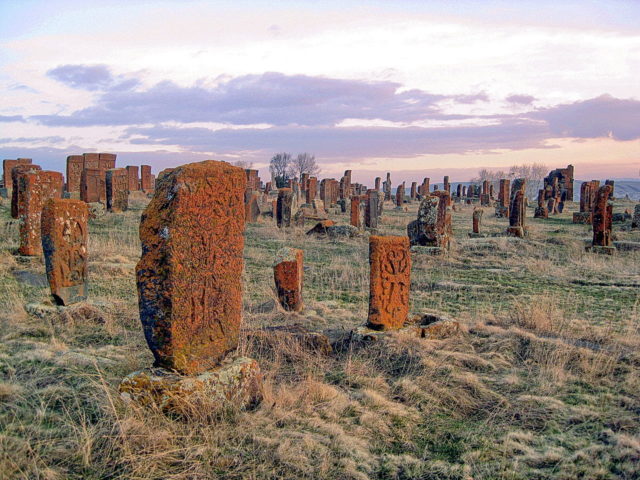
The oldest khachkar at Noratus, dedicated to Queen Katranide I, the wife of King Ashot I Bagratuni, was made in 879. The tradition of carving khachkars stopped during the Mongol invasion at the end of the 14th century but was revived again in the time of the Persian Safavid Empire. Many of these 16th and 17th-century stones demonstrate Asian influences mixed into the Armenian art.
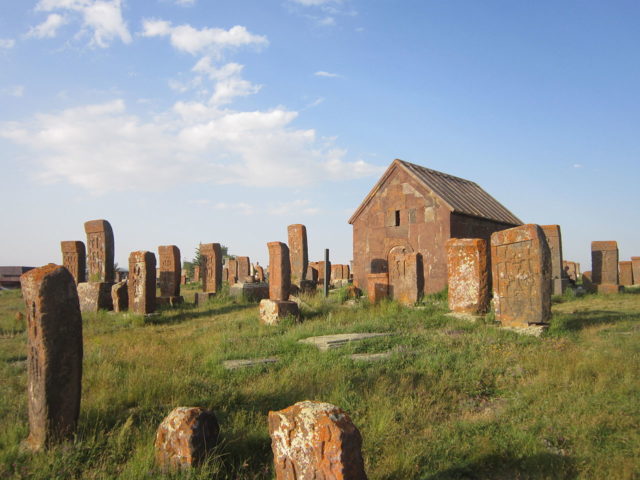
The Noratus cemetery has almost 1,000 khachkars, and each of them has its own unique ornamentation. A number of khachkars can also be found in the churchyard of St. Astvatsatsin church, as well as various other locations throughout Noratus village. Visitors can take a marked 14-stop walking tour of the cemetery.
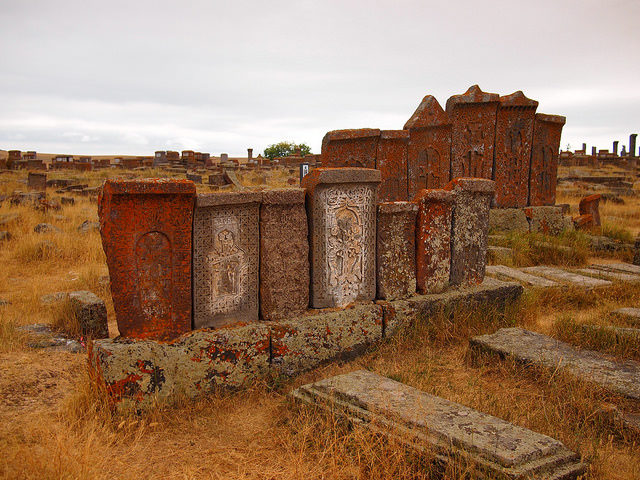
The first stop on the tour is the Geghama Stone, with carvings that celebrate the bringing of piped water to Noratus in the 17th century. The second is the gravestone for a farmer, depicting a farmer at his plow. The third stop is the Patrimonial graveyard, which is composed of four stones on two pedestals, significant because of their remarkable carvings.
The Ghazar graveyard is the fourth stop, with six stones in a row situated on one foundation block that was built from three huge stones. They were made by the master carver Kiram Kazmogh (1551-1610).
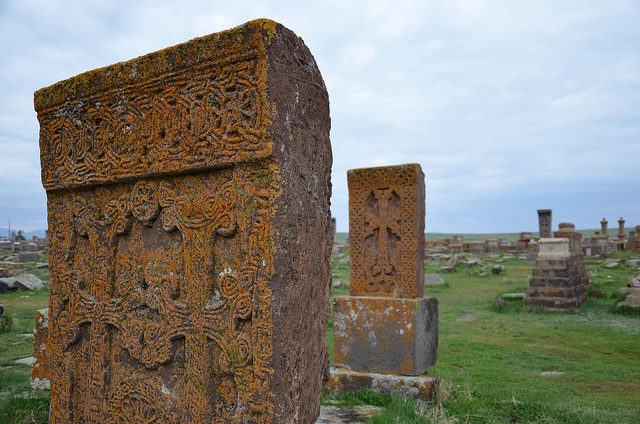
The most beautifully carved stones in the cemetery can be seen at the Harutents patrimonial graveyard. This is one of the largest parts of the cemetery and the fifth stop on the tour. It was made in the 14th century for the Harutents family. Stop six is the First Chapel and the two gravestones Kahana Khachkar, made for the priest Ter Avetisi Hovakimian in the 19th century.
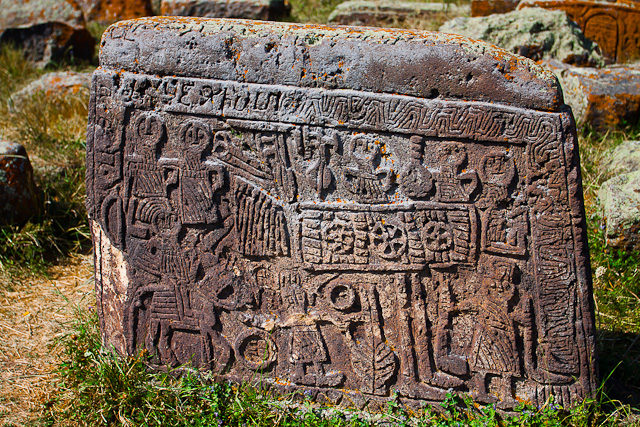
Stop seven is at inscriptions on the First Chapel made by the mason Alexan, whose grave lies opposite. At the eighth stop stands a group of early khachkars. These simply carved stones are believed by experts to be from the 10th to 11th century. The partially ruined Second Chapel surrounded with several khachkars is stop number nine.
The oldest graveyard from the 9th and 10th centuries is the next place to visit and after that, three khachkars from different periods can be seen (from the 9th century until the 16th century).
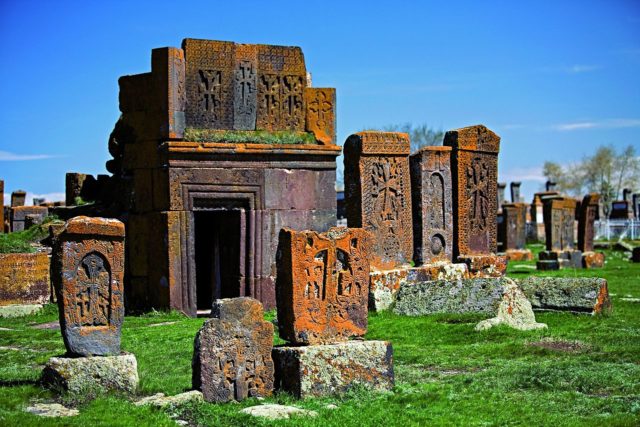
On the 12th stop, there is the Khachkar pedestal from the 13th century carved with geometric forms. At the 13th stop are the five khachkars comprising the Sargisents family graveyard, and another five from the 16th century can be seen at the Atipeks Family Graveyard, which is the 14th and last stop of the tour.
The Noratus cemetery is an extraordinary cemetery with a rich history. In 1977, one of the memorial stones was donated to the British Museum by Catholicos Vazgen I.
